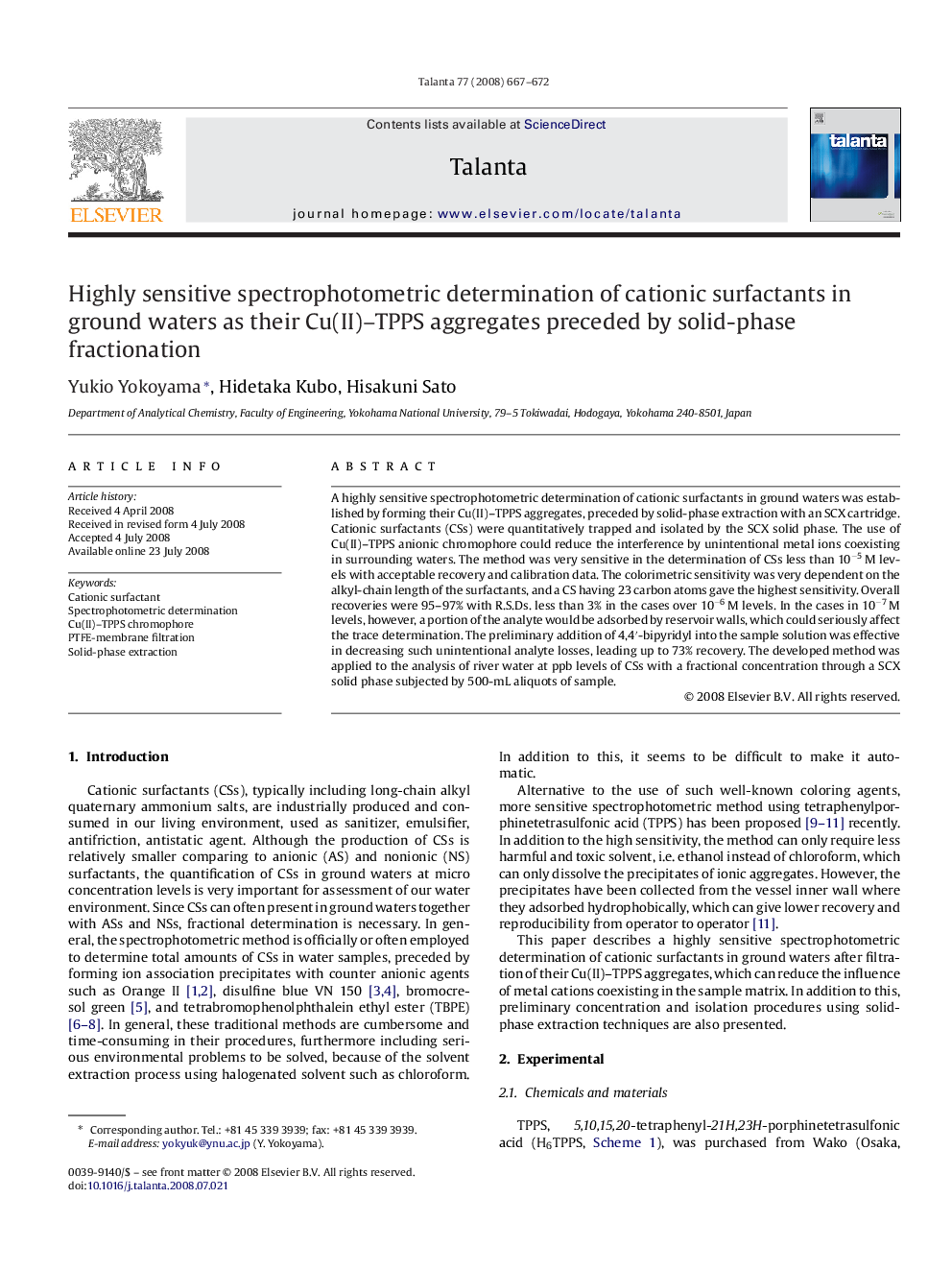| Article ID | Journal | Published Year | Pages | File Type |
|---|---|---|---|---|
| 1243119 | Talanta | 2008 | 6 Pages |
A highly sensitive spectrophotometric determination of cationic surfactants in ground waters was established by forming their Cu(II)–TPPS aggregates, preceded by solid-phase extraction with an SCX cartridge. Cationic surfactants (CSs) were quantitatively trapped and isolated by the SCX solid phase. The use of Cu(II)–TPPS anionic chromophore could reduce the interference by unintentional metal ions coexisting in surrounding waters. The method was very sensitive in the determination of CSs less than 10−5 M levels with acceptable recovery and calibration data. The colorimetric sensitivity was very dependent on the alkyl-chain length of the surfactants, and a CS having 23 carbon atoms gave the highest sensitivity. Overall recoveries were 95–97% with R.S.Ds. less than 3% in the cases over 10−6 M levels. In the cases in 10−7 M levels, however, a portion of the analyte would be adsorbed by reservoir walls, which could seriously affect the trace determination. The preliminary addition of 4,4′-bipyridyl into the sample solution was effective in decreasing such unintentional analyte losses, leading up to 73% recovery. The developed method was applied to the analysis of river water at ppb levels of CSs with a fractional concentration through a SCX solid phase subjected by 500-mL aliquots of sample.
